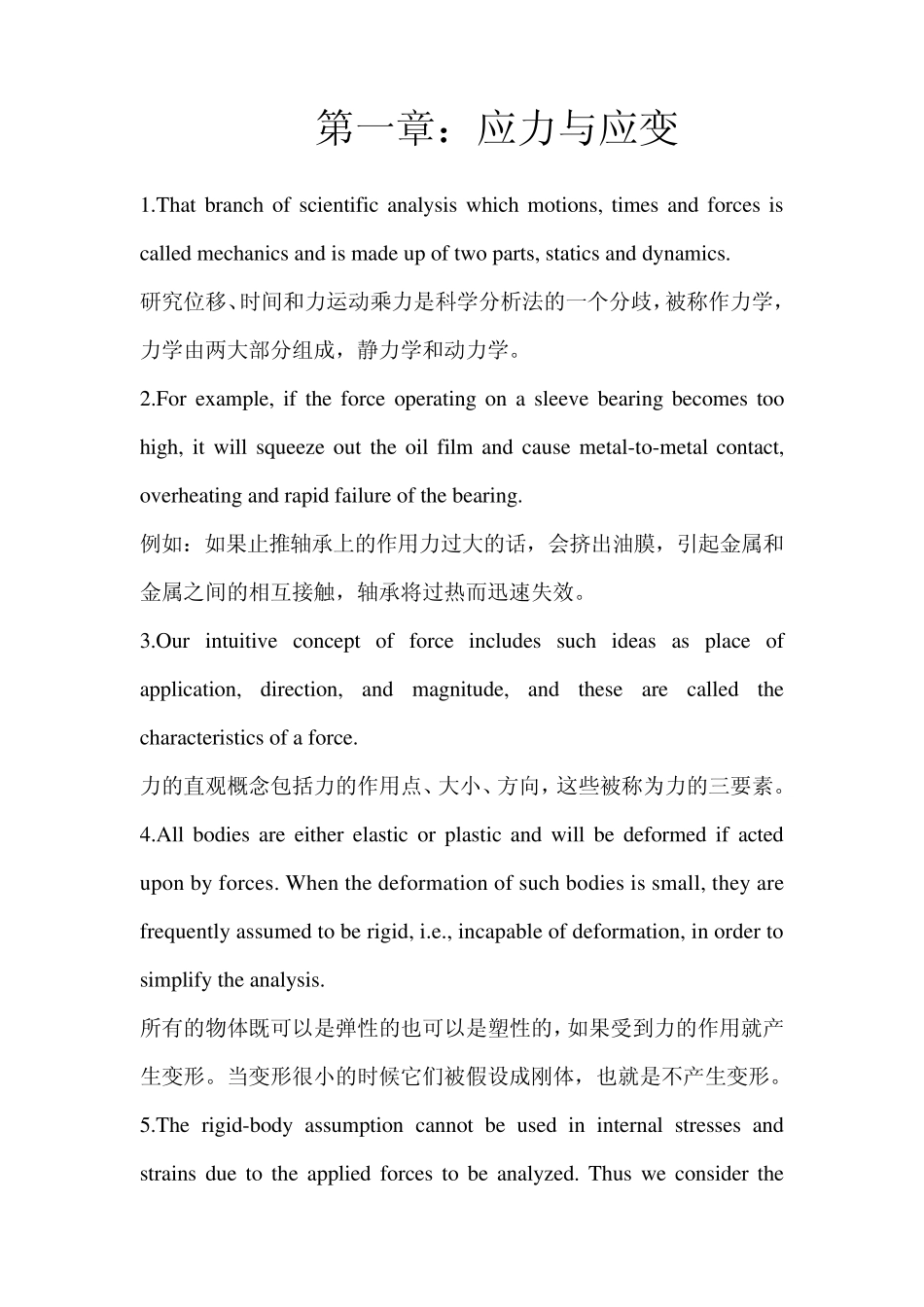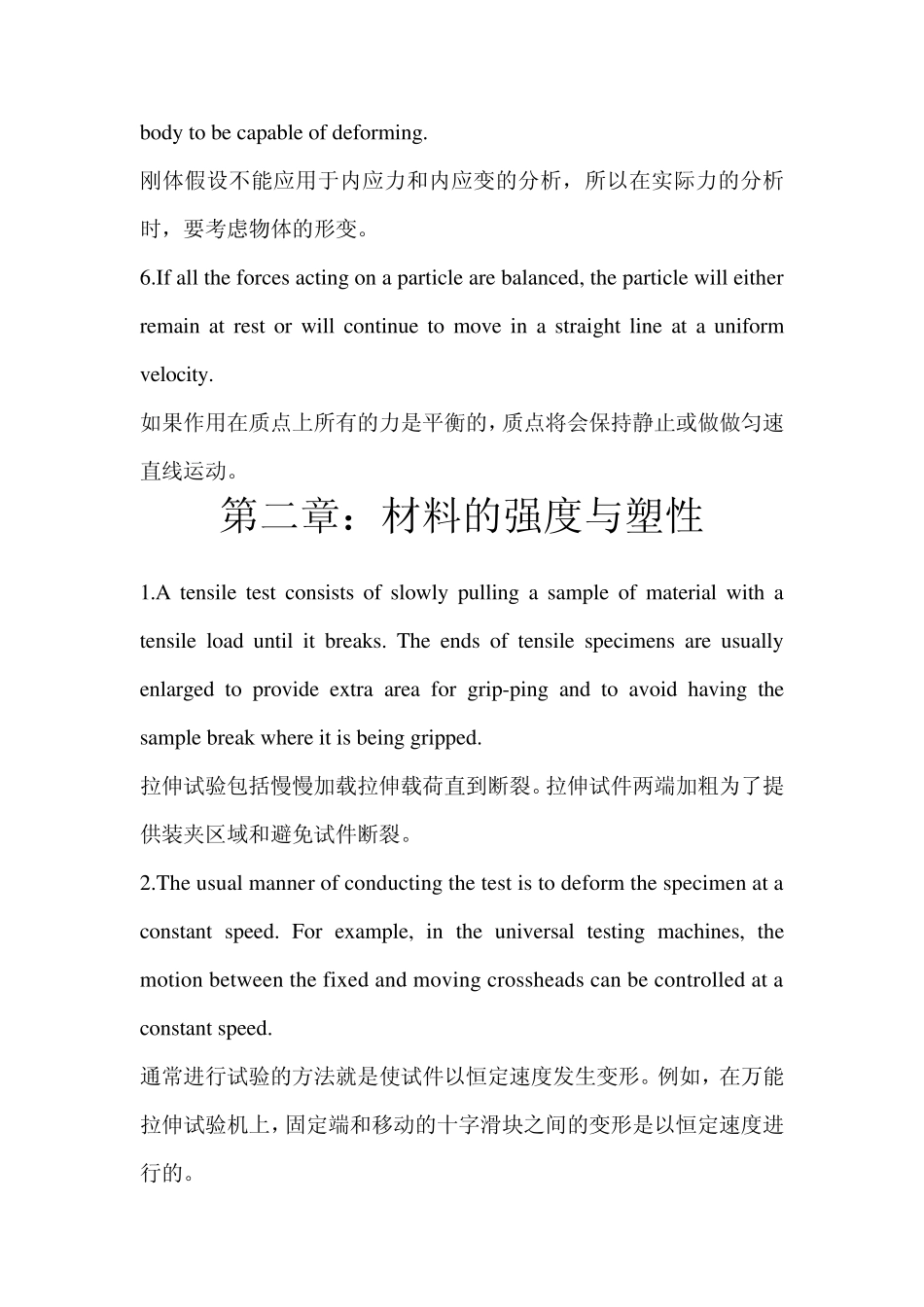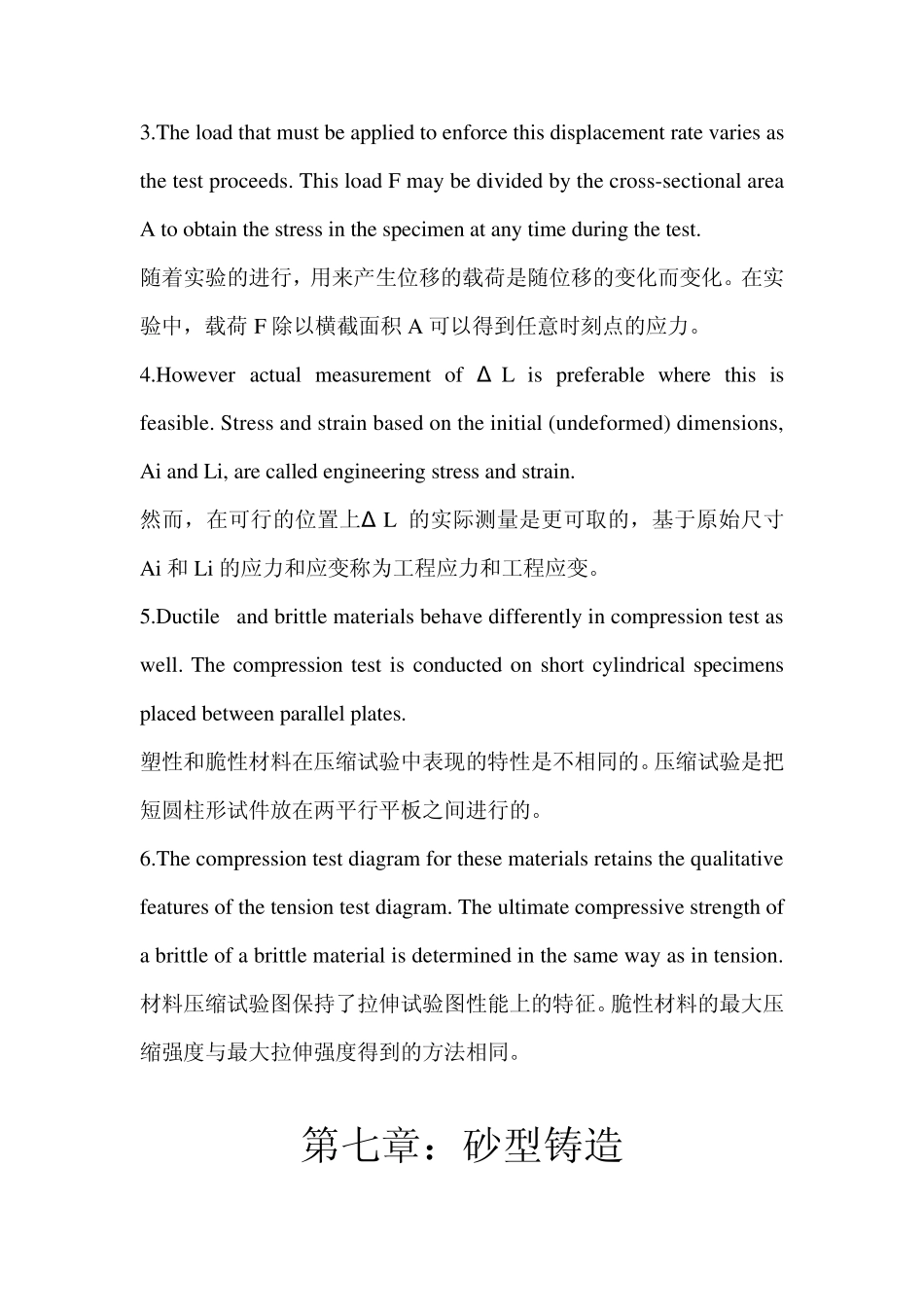第一章:应力与应变 1.That branch of scientific analysis which motions, times and forces is called mechanics and is made up of two parts, statics and dynamics. 研究位移、时间和力运动乘力是科学分析法的一个分歧,被称作力学,力学由两大部分组成,静力学和动力学。 2.For example, if the force operating on a sleeve bearing becomes too high, it will squeeze out the oil film and cause metal-to-metal contact, overheating and rapid failure of the bearing. 例如:如果止推轴承上的作用力过大的话,会挤出油膜,引起金属和金属之间的相互接触,轴承将过热而迅速失效。 3.Our intuitive concept of force includes such ideas as place of application, direction, and magnitude, and these are called the characteristics of a force. 力的直观概念包括力的作用点、大小、方向,这些被称为力的三要素。 4.All bodies are either elastic or plastic and will be deformed if acted upon by forces. When the deformation of such bodies is small, they are frequently assumed to be rigid, i.e., incapable of deformation, in order to simplify the analysis. 所有的物体既可以是弹性的也可以是塑性的,如果受到力的作用就产生变形。当变形很小的时候它们被假设成刚体,也就是不产生变形。 5.The rigid-body assumption cannot be used in internal stresses and strains due to the applied forces to be analyzed. Thus we consider the body to be capable of deforming. 刚体假设不能应用于内应力和内应变的分析,所以在实际力的分析时,要考虑物体的形变。 6.If all the forces acting on a particle are balanced, the particle will either remain at rest or will continue to move in a straight line at a uniform velocity. 如果作用在质点上所有的力是平衡的,质点将会保持静止或做做匀速直线运动。 第二章:材料的强度与塑性 1.A tensile test consists of slowly pulling a sample of material with a tensile load until it breaks. The ends of tensile specimens are usuall...


